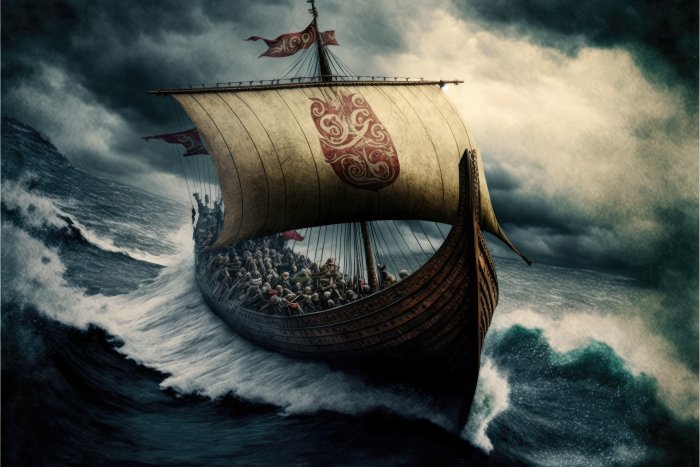Secrets Of Legendary Viking Crystal Sunstones And The Mysterious Uunartoq Artifact Unraveled
A. Sutherland - AncientPages.com - Over one thousand years ago, in open, hand-built wooden ships equipped with massive, hand-loomed sails, the Vikings navigated the extremely challenging waters of the North Atlantic.
While voyaging on the seas, how did the Vikings know where they were going?
According to sagas from the Viking era, the Vikings used whales, swells, birds, the stars, and the wind as clues to aid in navigation.
The Norse sagas mention a mysterious "sunstone" - a magical stone that showed sailors the road when the sun disappeared.
Medieval sunstone used to locate the Sun in the sky when clouds obstruct it from view. Credit: ArniEin - CC BY-SA 3.0
Now researchers say the stone is real and it's a special crystal. One of the reasons why the existence of sunstones has long been disputed is because they are contained in the saga of Saint Olaf, a tale with many magical elements.
However, this has changed, and now. Sunstones can no longer be considered just a myth.
Archaeologists have discovered a special crystal that suggests legendary Viking sunstones did exist in reality.
The crystal uncovered in the 1592 sunken Elizabethan shipwreck near the Channel Islands, between England and France, is shown to be an Iceland spar.
The research team headed by scientists at the University of Rennes says the stone was next to a pair of navigation dividers, suggesting it may have been kept with the ship's other navigational tools.
While voyaging on the seas, how did the Vikings know where they were going? Credit: Adobe Stock - Noel Cook
It is believed that Vikings used so-called sunstones as a compass to find their way in arctic waters.
Researchers suggest that sunstones could have been held up toward the center of the sky, allowing sunlight to hit them and get polarized and broken into an "ordinary" and an "extraordinary" beam.
On a clear, not cloudy day, they could have rotated the crystal until the pair of beams lined up. By noting where the sun was when this happened, navigators could make a reference point to use even when the Sun was obscured by clouds or twilight.
If the crystal is held east-west, the double image becomes a single image and thus allows a sailor to locate the Sun.
According to the study published in the journal Proceedings of the Royal Society A. "such a crystal immersed in seawater plays a crucial role by limiting the solubility, strengthening the mechanical properties of the calcite, while the sand abrasion alters the crystal by inducing roughness of its surface.
Although both phenomena have reduced the transparency of the Alderney calcite crystal, we demonstrate that Alderney-like crystals could have been used as an accurate optical sun compass to aid ancient navigation when the Sun was hidden by clouds or below the horizon.
To avoid the possibility of large magnetic errors not understood before 1600, an optical compass could have helped provide the sailors with an absolute reference. An Alderney-like crystal permits the observer to follow the azimuth of the Sun, far below the horizon," the research team writes in the science paper.
It is doubtful archaeologists will ever uncover a complete crystal in a Viking site because Vikings preferred to commit their dead to funeral pyres, cremating them and their grave goods.
Then there is the mysterious Uunartoq artifact that could shed more light on how Vikings navigated 1,000 years ago. The disc is estimated to have been about seven centimeters in diameter.
When the artifact was discovered, some dismissed it as simply a decorative object. Other scientists believe that the Uunartoq disc was used as a compass by the Vikings as they traversed the North Atlantic Ocean from Norway to Greenland.
"Vikings routinely crossed the North Atlantic without a magnetic compass and left their mark on lands as far away as Greenland, Newfoundland, and Baffin Island.
Based on an eleventh-century dial fragment artifact found at Uunartoq in Greenland, it is widely accepted that they sailed along chosen latitudes using primitive Sun compasses.
Such instruments were tested on the sea and proved to be efficient hand-held navigation tools, but the dimensions and incisions of the Uunartoq find are far from optimal in this role.
On the basis of the sagas mentioning sunstones, incompatible hypotheses were formed for Viking solar navigation procedures and primitive skylight polarimetry with dichroic or birefringent crystals," a team of Hungarian researchers wrote in their science paper.
A closer examination of the Uunaritoq artifact reveals that the disc could, in fact, have functioned as a single entity. However, it is more likely the disc was used in conjunction with other tools - including a pair of crystals and a flat, wooden slab - to help navigate when the sun was low in the sky or even below the horizon.
"When the sun is low above the horizon, even the shadow of a small item can fall off the board, and such situations are frequent in the northern seas," said study co-author Balazs Bernath
With the help of the crystal sunstones, the Vikings could locate the sun after sunset. Such crystal calcite stones produce patterns when they're exposed to the polarization of UV rays within the sunlight.
This means that when the crystals are held up to the sky, the orientation of these patterns cast within the stone can help pinpoint the sun's position below the horizon. Once the Vikings had determined the position of the hidden sun, they could have used a specially designed wooden slab called a shadow stick to simulate the gnomon's shadow based on the angle at which the hidden sun would hit it. The location of the outer edge of that imaginary shadow could then have been used to determine their cardinal direction.
The discovery of the crystal sunstone and the Uunartoq artifact provides us with valuable knowledge of how the Vikings could navigate long distances so many years ago.
The Norse saga tells:
"The weather was very cloudy. It was snowing. Holy Olaf the king sent out somebody to look around, but there was no clear point in the sky. Then he asked Sigurd to tell him where the sun was. After Sigurd complied, he grabbed a sunstone, looked at the sky and saw from where the light came, from which he guessed the position of the invisible sun. It turned out that Sigurd was right."
For a long time, this intriguing story baffled historians. Today, we know the mythical Viking sunstone was a polarizing crystal that was most likely used by the Vikings to successfully navigate across the North Atlantic to the New World.
Updated on January 14, 2024
Written by: A. Sutherland - AncientPages.com Senior Staff Writer
Copyright © AncientPages.com. All rights reserved. This material may not be published, broadcast, rewritten or redistributed in whole or part without the express written permission of AncientPages.com
More From Ancient Pages
-
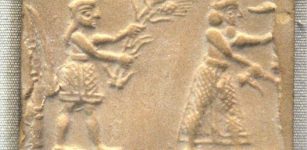 Who Was The Sumerian Ensi?
Featured Stories | Jan 24, 2020
Who Was The Sumerian Ensi?
Featured Stories | Jan 24, 2020 -
 Gonzalo Guerrero – The Renegade Who Joined The Maya Against His Own People
Featured Stories | Feb 27, 2020
Gonzalo Guerrero – The Renegade Who Joined The Maya Against His Own People
Featured Stories | Feb 27, 2020 -
 Ruins Of The Mysterious Kingdom Of Guge That Suddenly Vanished Overnight
Civilizations | Apr 10, 2021
Ruins Of The Mysterious Kingdom Of Guge That Suddenly Vanished Overnight
Civilizations | Apr 10, 2021 -
 Pompey The Great: One Of Roman Empire’s Most Successful Military Commanders
Featured Stories | Jun 14, 2019
Pompey The Great: One Of Roman Empire’s Most Successful Military Commanders
Featured Stories | Jun 14, 2019 -
 Copper: First Metal Used By Ancient Man More Than 10,000 Years Ago
Ancient History Facts | Oct 25, 2016
Copper: First Metal Used By Ancient Man More Than 10,000 Years Ago
Ancient History Facts | Oct 25, 2016 -
 Hephaestus (Hephaistos) – God Of Fire And Master Craftsman Constructed Talos, First Greek Robot And Divine Weapons Of The Gods
Featured Stories | Jul 7, 2018
Hephaestus (Hephaistos) – God Of Fire And Master Craftsman Constructed Talos, First Greek Robot And Divine Weapons Of The Gods
Featured Stories | Jul 7, 2018 -
 Magnificent Alsengem Among 30,000 Archaeological Objects Discovered In Kalmar, Sweden
Artifacts | Mar 5, 2024
Magnificent Alsengem Among 30,000 Archaeological Objects Discovered In Kalmar, Sweden
Artifacts | Mar 5, 2024 -
 Unusual Discovery Of A Bronze Age Axe In Norway – Is An Unknown 3,000-Year-Old Shipwreck Nearby?
Archaeology | Jul 19, 2024
Unusual Discovery Of A Bronze Age Axe In Norway – Is An Unknown 3,000-Year-Old Shipwreck Nearby?
Archaeology | Jul 19, 2024 -
 Jackalope – Are Mythical Horned Hares Real?
Featured Stories | Mar 11, 2019
Jackalope – Are Mythical Horned Hares Real?
Featured Stories | Mar 11, 2019 -
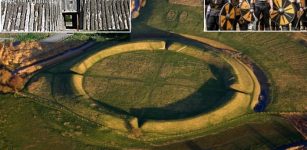 Great Viking Fortresses Built By King Harald Bluetooth
Featured Stories | Dec 12, 2022
Great Viking Fortresses Built By King Harald Bluetooth
Featured Stories | Dec 12, 2022 -
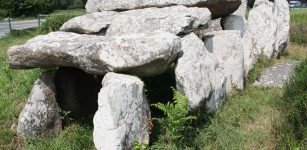 Mysterious Megalithic Stones Of Carnac, France – An Unsolved Neolithic Enigma
Civilizations | Oct 12, 2018
Mysterious Megalithic Stones Of Carnac, France – An Unsolved Neolithic Enigma
Civilizations | Oct 12, 2018 -
 Great Serpent Mound Of Ohio: Most Famous Ancient Earthwork Of North America
Civilizations | Mar 17, 2014
Great Serpent Mound Of Ohio: Most Famous Ancient Earthwork Of North America
Civilizations | Mar 17, 2014 -
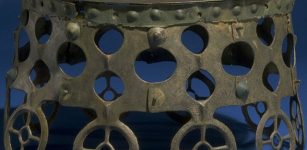 Mysterious Balkåkra Disc – Rare Strange Bronze Artifact Found In A Bog
Artifacts | Jul 25, 2019
Mysterious Balkåkra Disc – Rare Strange Bronze Artifact Found In A Bog
Artifacts | Jul 25, 2019 -
 The Amarna Letters: Diplomatic Correspondence In Ancient Egypt
Artifacts | Apr 27, 2016
The Amarna Letters: Diplomatic Correspondence In Ancient Egypt
Artifacts | Apr 27, 2016 -
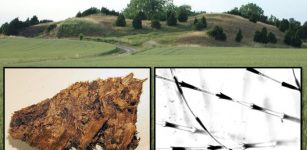 Surprising Discovery In Valsgärde Viking Boat Graves – Scandinavian’s Oldest Down Bedding Found
Archaeology | Mar 27, 2021
Surprising Discovery In Valsgärde Viking Boat Graves – Scandinavian’s Oldest Down Bedding Found
Archaeology | Mar 27, 2021 -
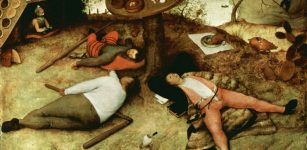 Medieval Paradise Cockaigne – Land Of Extreme Pleasure And Luxury
Featured Stories | Dec 12, 2018
Medieval Paradise Cockaigne – Land Of Extreme Pleasure And Luxury
Featured Stories | Dec 12, 2018 -
 Astonishing Lunar And Solar Calendars Created 30,000 B.C.
Artifacts | Aug 8, 2017
Astonishing Lunar And Solar Calendars Created 30,000 B.C.
Artifacts | Aug 8, 2017 -
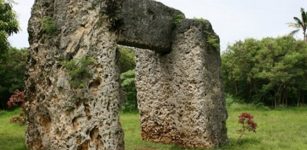 Polynesian Stonehenge: Enigmatic Ha’amonga ‘a Maui Trilithon Of Tonga
Civilizations | Sep 11, 2018
Polynesian Stonehenge: Enigmatic Ha’amonga ‘a Maui Trilithon Of Tonga
Civilizations | Sep 11, 2018 -
 Mysterious Gigantic Jars Of Unknown Origin Discovered Worldwide
Artifacts | Dec 27, 2018
Mysterious Gigantic Jars Of Unknown Origin Discovered Worldwide
Artifacts | Dec 27, 2018 -
 Amage: Sarmatian Warrior Queen/Regent Who Impressed With Remarkable Military Skills
Featured Stories | May 23, 2023
Amage: Sarmatian Warrior Queen/Regent Who Impressed With Remarkable Military Skills
Featured Stories | May 23, 2023


